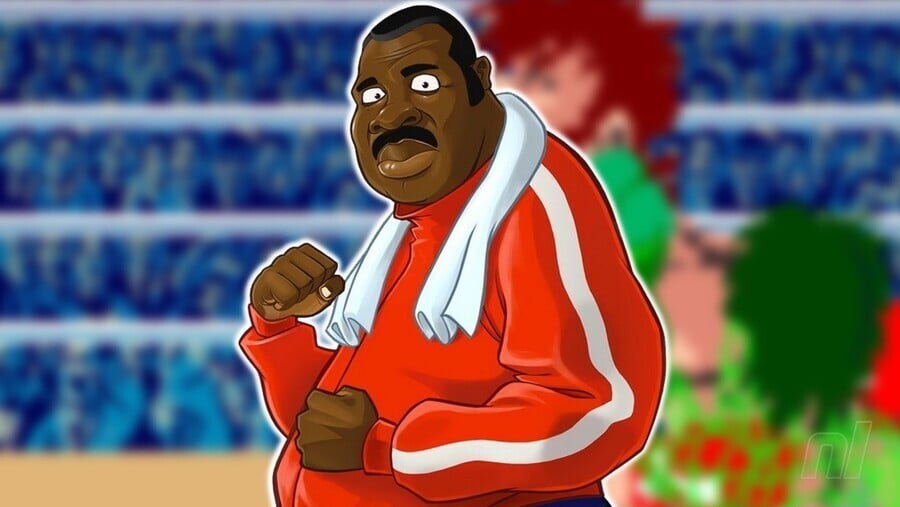
Whatever your age and whatever the context, taking decent care of yourself and recognising potential health issues before they become serious problems is always good advice. Anybody who plays video games will likely have experienced related physical discomfort of one form or another, be it a cricked neck from hunching over a handheld, tired arms from playing while lying in bed, or sensitive wrists and finger joints after mashing the same button repeatedly for hours. Woe! How we suffer at the coalface of interactive entertainment!
In this guide we present advice on how to stay as comfortable and healthy as possible while playing your Switch or Switch Lite. We'll look at some common issues that tend to crop up when playing video games for extended periods, and we'll highlight some accessories that over the years we've found invaluable for preventing our hands and wrists disintegrating.
 Watch on YouTube
Watch on YouTubeSubscribe to Nintendo Life on YouTube841k
We hope to offer advice for optimum comfort and accessibility while playing Switch (or any other video game platform, really). Not just for the more, ahem, 'seasoned' gamer but for anybody who needs to take better care of themselves.
Avoiding common video game-related health issues
If you're going to avoid little aches and pains while gaming, you've got to think carefully about your habits and the equipment you use. Below you'll find general tips, things to consider and a few handy accessories that have helped us avoid problems, or manage existing conditions.
At the top, we'll start with your bottom...
Think about your posture
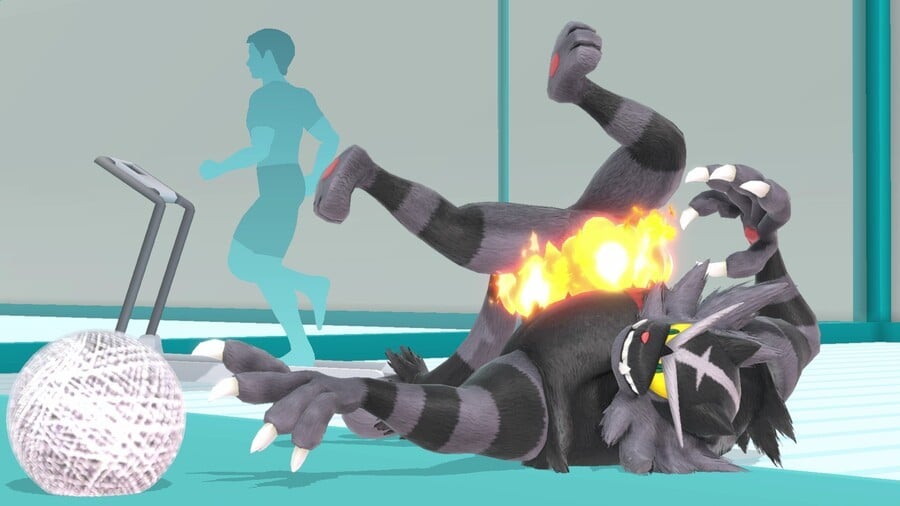
First up, we should remember that how we're sitting can have serious repercussions for our long-term comfort, and this is as true for gaming as for any other screen-based activity we undertake for work or pleasure.
Whether you're sitting on a sofa or super duper gaming chair with neon down the side, the basic principles are the same:
- Avoid slouching or leaning
- Support your back with cushions or whatever you have
- Avoid craning your neck; have the screen at a comfortable, natural angle
- Avoid crossing your legs
- Try to keep your feet flat on the floor, with your knees bent at an angle no less than 90°
- Stand up every so often (if you've got a smart watch that reminds you, use it!)
- Use compression socks, if necessary, to help improve circulation
A good chair is an absolute must. There are a multitude of gaming chairs on the market, although with the exception of the incredible (and incredibly pricey) Herman Miller X Logitech G Embody Gaming Chair, we can't really vouch for their comfort, despite their snazzy looks.
Is a gamer chair essential? Of course not, and quality is hugely variable, but it may well be worth investigating the options if you spend multiple hours with a pad in your hand. Speaking of which...
Go Pro (Controller)
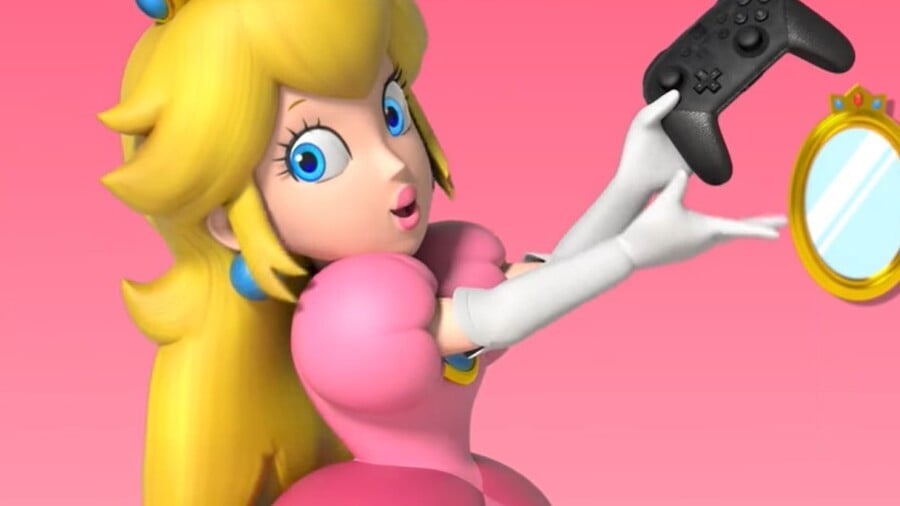
The controller is a vital part of your gaming experience, and it's worth considering the hundreds of hours you'll be interacting with this piece of plastic. The Switch is a lovely little device — cute and convenient — but the removable Joy-Con controllers aren't the most ergonomic of input devices, especially for anybody with average-to-large hands. If you've got old hand injuries or another existing condition, you may start to experience joint pain or cramps after prolonged use.
There are plenty of Switch controllers to choose from, but we strongly advise that you invest in a Pro Controller if you play in docked mode a lot. The Switch Pro Controller might seem like an unnecessary extravagance (gamepads are expensive accessories these days, and you'd probably rather spend that cash on a game, right?), but we promise you'll never go back. Using a Pro Controller for the first time highlighted for us just how much we'd been adjusting our natural grip to accommodate the Joy-Con's straight edges and reduced size.
If the official Pro Controller is a little too rich for your blood, third-party alternatives are priced more reasonably, although they are often missing one or more features — gyro compatibility, rumble feedback or NFC chip readers for amiibo, for example. Wired pads are even cheaper:
Please note that some external links on this page are affiliate links, which means if you click them and make a purchase we may receive a small percentage of the sale. Please read our FTC Disclosure for more information.
Get a grip
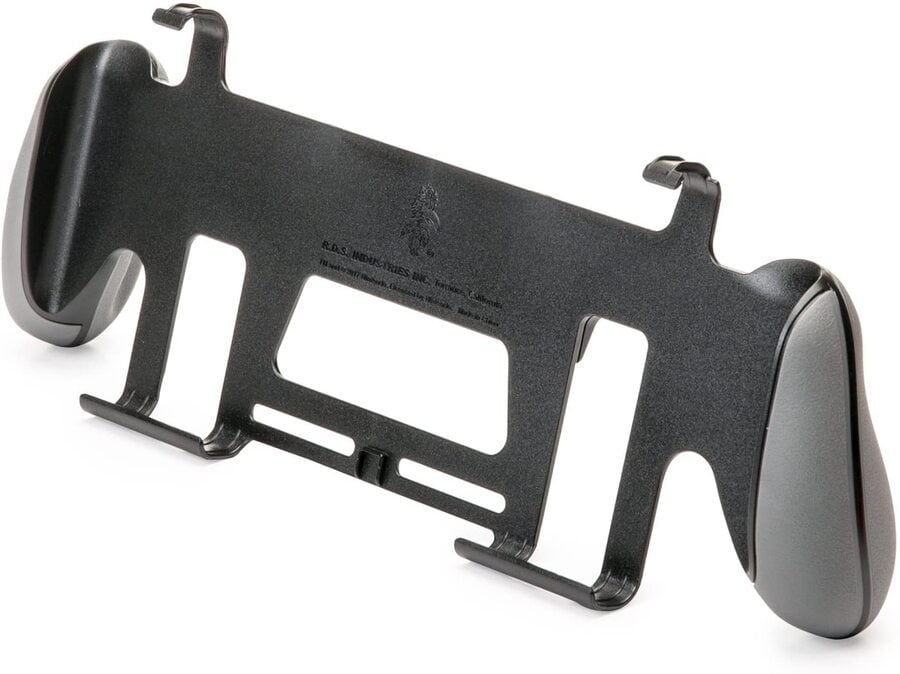
We'd also advise that you use a grip for your Switch when playing in handheld mode. There are many options available — the Satisfye Pro Gaming Grip, for example — and they'll make portable play much more comfortable in the long run, even if they look a tad ungainly and add bulk to your satchel, knapsack, briefcase, bag-for-life or whatever else you carry your Switch in when you're out and about.
There are dozens available and they all do more or less the same thing. Some even double as a protective shell or portable charger for your Switch or Switch Lite:
There are also grip options when it comes to your Joy-Con — specifically when used in the sideways configurations for some local co-op multiplayer. Again, the Joy-Con are clever little devices (when they're not drifting, that is), but they can become cripplingly uncomfortable to use if your hands aren't the right size for them. The grips below (or similar ones — you'll be spoiled for choice if you google 'Joy-Con grips') will help avoid aggravating existing ailments, or causing new ones:
Bigger is better
More ergonomic alternatives to Joy-Con controllers are also available for handheld play. They might not be as small or attractive, but options such as the Hori Split Pad Pro are significantly more comfortable to use in handheld mode than the regular Joy-Con if you've got big flappy hands. Here are a few oversized Switch controller options that we like:
In general, it's natural to rest your hands on your lap when playing on a television — few gamers would play for hours on end with the pad held out in the air in front of them — but it can be a good idea to rest your arms on a cushion or other such support, especially while playing in handheld mode (Nintendo-branded cushions are available, of course, but any old normal cushion, rolled-up towel or family pet will do).
You want to avoid supporting the entire weight of the console while playing and Switch is heavier than a Game Boy or a 3DS. Gripping anything for extended periods creates tension that runs through the wrists and up your forearms and will become uncomfortable after a few minutes (if you've played Switch in handheld mode in bed, for example, you'll have likely experienced this).
Also, stretch! Your hands and arms are your primary input tools so make sure you limber up before settling down and remember to stretch out every now and then while you're playing. It'll do you good, honest.
- Further reading: Guide: Best Nintendo Switch Controllers
Look after your fingers

It's easy to forget just what a beating our fingers and hands take in even the mildest gaming session, so we're breaking them out into their own mini-section. Button presses might be tiny actions in isolation, but their repetitive nature and the fact that it's very easy to get caught up in the moment and hammer an input far harder than necessary means playing games can be very hard on your digits.
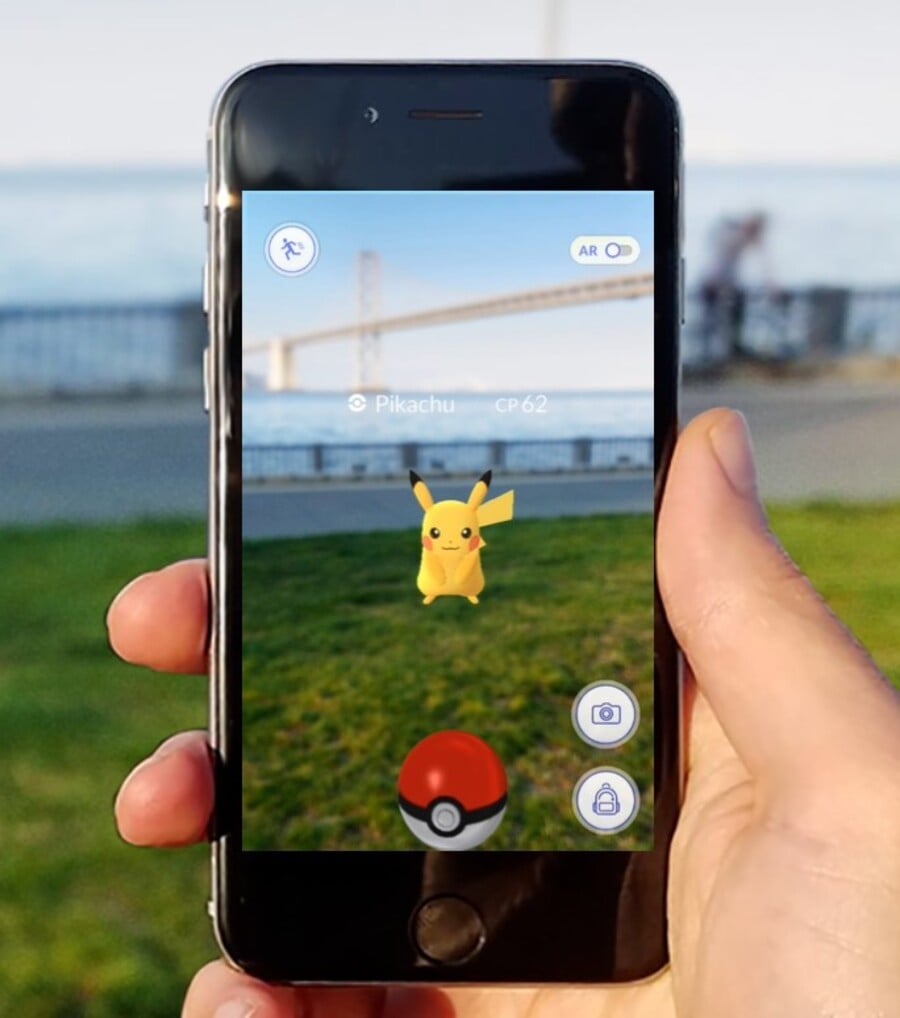
Again, give them a shake and a stretch. Don't go mad — you don't need to crack each knuckle like you're Bruce Lee preparing for an epic showdown — but it's important to get the blood flowing.
This applies to games across all platforms and it's also important to simply be aware of the repetitive nature of your inputs. The cause of an ongoing thumb injury for this writer can be traced back to the long summer of 2016 and catching Pocket Monsters in Pokémon GO. Repeatedly catching thousands of monsters in those months — using a single hand to hold the phone and flick Poké Balls with a thumb — resulted in a Repetitive Strain Injury that still flares up to this day.
The moral of this story? Switch hands, if possible, give your overworked digits a rest, and try to remember that the tiniest of repeated actions and inputs while gaming will take their toll eventually.
It's also worth remembering that you can change any button input on Switch for another at a system level. To change your Nintendo Switch button mappings, head to System Settings > Controllers and Sensors > Change Button Mapping.
Some games are harder (on you) than others
Different games place different demands on you, so be aware of how playing high-frequency input games impacts your body over time. Battling through a hack-and-slash action game, for example, may take forty, fifty, sixty hours or more of hitting the same buttons over and over and over again.
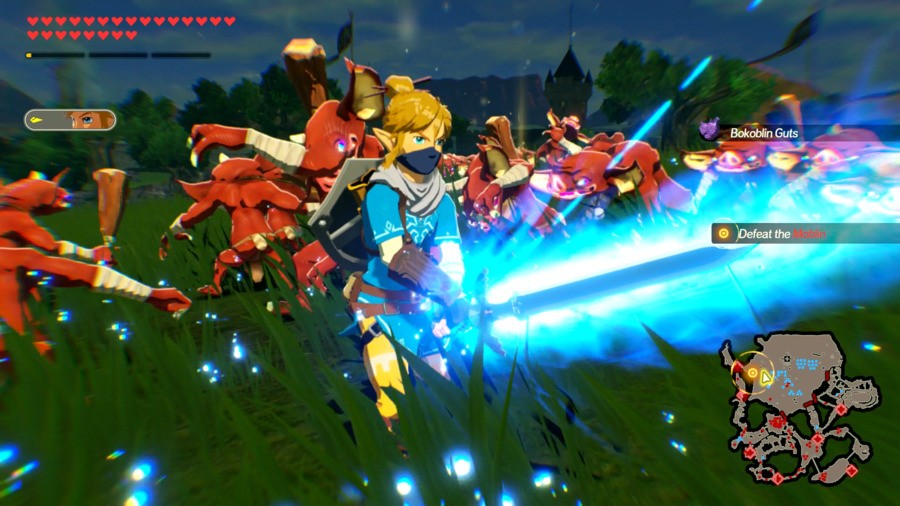
It's easy to forget this when you're distracted by the game. For an illustration of the unthinking labour we put our poor old hands through on a regular basis, take sixty seconds to hammer the 'Y' button repeatedly on a Joy-Con while your Switch is turned off. Ow.
It's a good idea to anticipate and avoid overly repetitive inputs and vary the types of games you play. Avoid going from one button-masher to the next without any respite. Why not throw in a puzzle game between your hack-and-slash adventure and the clicker that has you tapping your phone screen frantically? Why not take a break between delivering beats in Smash Bros. and smashing buttons in Mario Party?
No, this doesn't mean you have to break out Ring Fit Adventure or one of the other fitness and exercise games on Switch before diving from one Musou game to the next, but it's worth remembering that different games place different demands on your body and it can be good to break your routine, vary your activity patterns and give overworked joints a rest.
Keep things in focus
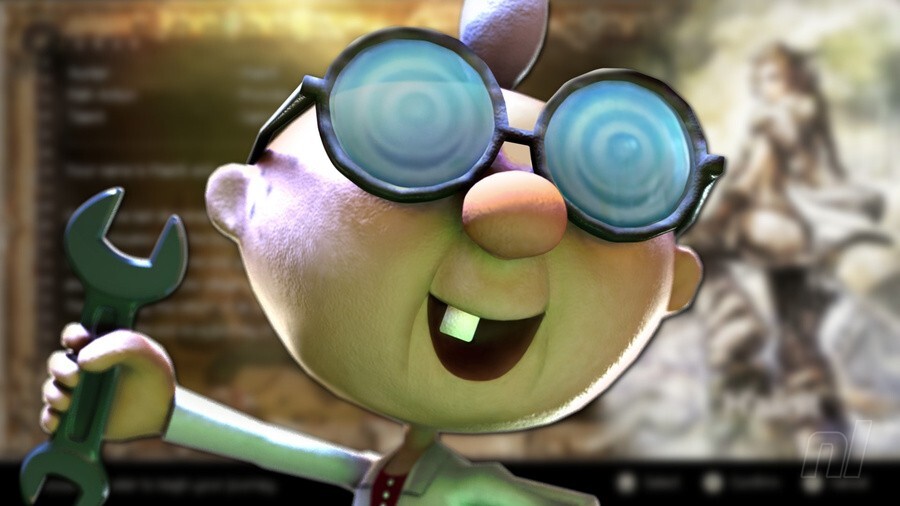
Endless hours in front of a screen can be tough on your eyes. It's important to consider your distance from the screen and whether its brightness is sufficient for comfortable viewing. In handheld mode, it's easy to adjust your Switch's screen brightness (hold down the 'Home' button at any time for quick access to the brightness slider).
Small text can also be a cause of eye strain on Switch. We've highlighted some of the games where this is an issue in the guide below, and it's worth considering how this will affect your experience depending on the way you're playing (on a regular Switch or a Switch Lite, for example).
- Further reading: Nintendo Switch Games With Small Text: The Worst Offenders - How To Use Zoom On Switch
Final tips to keep match fit
In addition to all of the above, here are a few more common-sense tips if you're planning a marathon gaming session:
- Stay hydrated and drink plenty of water (dry brain does not make good game)
- Wear comfortable clothes (no, you don't need a gaming uniform or anything, but think about how tight clothing might affect posture or circulation if you're sitting for extended periods)
- And finally — not to get all Nintendo on you — remember to take a break once in a while! Go for a walk, grab a coffee, eat something nutritious, interact with a human being (digitally or otherwise), that sort of thing
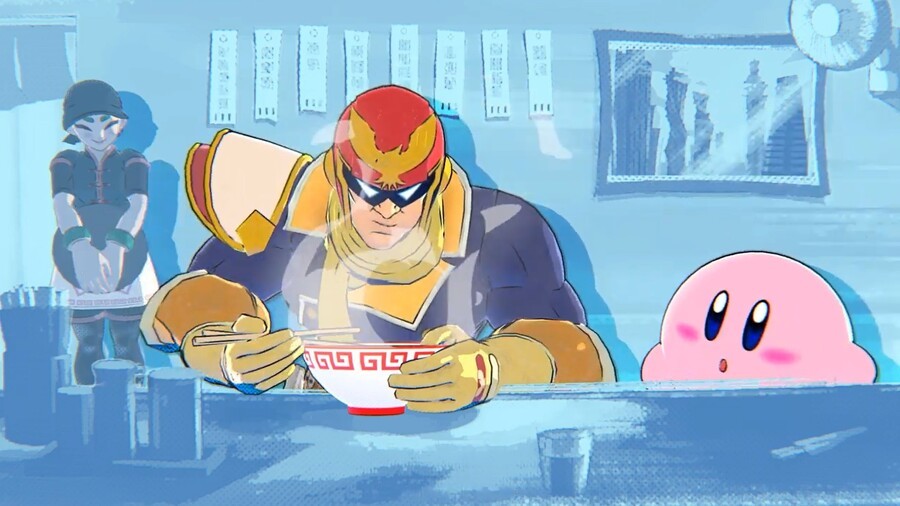
Hopefully, most of this information is old hat, but it's always handy to remind ourselves of the importance of healthy body and mind, and to head off bad habits at the pass. It's so easy to slouch on the couch and think 'oh, just five minutes'... and four hours later you're wondering why your back aches. Eventually, you'll find it's a challenge to stand up without vocalising the effort and before you know it you'll be complaining about cold feet, numb wrists, lumber twinges, and how all music these days sounds the same. It'll happen!
Let us know if you've got any of your own tips or tricks to avoid gaming-related aches, pains and health issues.





Comments 49
As a gamer that’s 30 and just started working out about 3 months ago, it’s very nice and mindful to see that an article like this got posted. Thanks. 🙏🏽
What's your favorite video game related exercise? MINE'S CHOCOLATE! HA-HA!
I have plenty of bad habits I need to break thanks for the great guide.
I admit to having very poor posture and craning my neck alot, but I do stand up whenever I'm really getting into a game.
I also want add that doing origami after playing for several hours is really relaxing on the fingers.
I’ve fully accepted that I’m gonna get RSI due to the amount of time I spend in front of a keyboard for uni and then for work. Gaming’s the least of my worries!
...who needed this? Just use common sense, take breaks, and stop if it starts hurting.
I find PC gaming with a mouse hurts after a while, but consoles are made for the purpose.
There’s no better treatment than a good exercise program. Sitting for extended periods can be harmful to the body, tightening muscles around the joints, weakening muscles in the core and can lead to chronic pain.
Best solution in apparently healthy individuals is to stay fit and strong with some form of resistance training, yoga, martial arts, walking...there are multitudes of options to choose from.
The secret is to choose something you enjoy most.
Remember, small, repetitive movements are the most harmful thing to the body, because it’s easy to just sit there and do thousands of repetitions, daily. Being mindful that it’s easy to sink several hours into a game is a major key. Avoid that, and you’ll be fine!
And if you must sit for long periods, make yourself get up and take breaks. Health over work.
@Kimyonaakuma There’s no such thing as common sense. EVERYTHING is learned, taught or handed down. Some people need this information, you may not but someone out there will find this useful.
I play mostly in handheld mode on the couch in front of the TV. I even have an OG dockable switch.
...I know...
sometimes after a while my hands aren't getting enough blood cause I'm laying on my back
I try to move so my heart is above my hands and science does the rest. Thanks, science. ❤️
1. Have the right tools at your disposal. If you are gaming mostly on a TV, have a great controller. If you do handheld, get a grip that makes long sessions less painful.
2. Keep the sessions to a reasonable time frame. I think 1-2 hours is good.
3. Have hobbies outside of gaming. Take time and enjoy those interests as well.
4. If you don't like a game, stop playing it. Games are expensive, but so is your time and stress, and neither is worth it for a bad game.
5. If you are neglecting your spouse, friends or family due to gaming, cut back.
6. Exercise!
7. Don't fall into FOMO. Play the consoles and games that interest you, not because the media or fanboys tell you that you need to play this game or that console.
8. Don't be toxic to others in the gaming community. Be supportive and positive. If others enjoy a game or a console that you don't, let them.
I get whats called "gamer eyes" which are dry, red eyes because I dont blink when playing. (Youll always know when i play for more than an hour cause my eyes get red haha)
But my optometrist told me to build a habit to look away from the screen and blink. I have been doing it between games (like in fall guys between the game choosing, or in COD between deaths and games). Really helps to build little habits like this. Ive also been drinking water between sessions (helps me get my daily water intake)
I ended up with tennis elbow this year 300 hours into Animal Crossing of all games (and some cell phone overuse too). My symptoms were all like carpal tunnel, it was terrible. My hands and wrists would also hurt working out, positioning in different angles and working from home. Luckily with stretching, a silly elbow pillow I had to use for a month, the pro controller and a grip for handheld, my symptoms are nearly gone.
I dont know why this article exists. Must have been a slow day. It's more an advert for Amazon.
Probably to do with Cyperpunk and epilepsy which seems to be an issue with today's youth.
I'm sure most games have an epilepsy warning though.
@Ttimer5 I also get this, even if I play for a short period.. but I also suffer from dry eye generally. I've gotten better at making sure I take breaks between rounds, forcing more productive blinks and drinking more water. I have a heating mask I use a few times a week that really helps soothe them, if they're tired and dry from remote work and gaming.
Between my eyes and my wrists, quarantine is really doing a number on me lol
Turn off your rumble. My hands have gone numb so many times from this alone on games with too much of it.
Not gonna lie, when I saw the picture of Doc Louis, my immediate thought was 'Doc Louis's Punch-Out!!' was finally coming to Europe, but on the Switch instead of the Wii. 🤣
Thanks for the guide! I started developing thumb and thumb joint pain in the last 6 months from mouse use for work, and it's still flaring up when I game or have to lift stuff. I did find the Hori Split Grip ( thanks to the users here) much easier on my thumb. I guess age catches up to everyone, but I haven't even gamed enough to get this! Ha!
Love the image lol.
@GTHOLLAND yeah was kinda strange and weak plug for the Pro controller. Says theres an array then just show a bunch of Pro lookalikes. That's cool I guess but meh
I needed this advice back in 2000!! I was playing Zelda: MM constantly for two days, then my chest and left shoulder were in agony 😬 It was Nintendoitis 🤣
10/10 tips.
I needed these tips when I used to play MK7 on my 3DS because my finger joints would be screaming 'ARTHRITUS!!!'
Now I'm going to play smash docked but everytime I lost a stock, I do 5 push ups
I go for walks and go on runs. Tis good to keep in tip top condition!
Great article. Don’t stay still for too long keep the body moving and guessing xxxx
What an odd article some good advice here but can’t help think that it’s just to sell some stuff for Amazon these affiliate link articles are getting more and more frequent plus most of this stuff is available cheaper elsewhere
@Gs69 I think it may be a bit of both. I do agree with their insistence of a grip, as it made my Switch Lite so much easier to play, but there are so many options available. I recommend someone do their own research and buy what they feel is best for them.
Never ever play Para Para Paradise PS2 for straight 1 hour in Expert difficulty without taking a break for at least 5 minutes.
Just when you think NL were genuinely concerned for our health, we see the real reason for this article.. affiliate links! 😜
[EDIT]
@Gs69 Great minds, buddy!
After my third pair of joy-cons went all drifty, I bought a third party set from Amazon that has been serving me very well. https://www.amazon.com/Wireless-Controllers-Compatible-Nintendo-Replacement-Red/dp/B08887GCGB
They work while being disconnected from the Switch, feel tighter and less spongy, and the size is perfect for my large hands.
Yeah, exercise seems to help, or prevent, tendonitis. Decent article topic.
I know I cross my legs a lot and I need to stop that so my back won't hurt so much. Other than that I'm pretty good.
To help avoid bed sores and infections during longer gaming sessions, I've recently started to change my adult diapers at least twice a week.
Nice to see such article over here. Stay healthy everyone!
Even people who don't play videogames should walk for an hour a day.
The Satisfye grip is the first product I ever bought from Youtube sponsorship (Shout out to Tetrabitgaming and Ceave gaming) and it makes playing long sessions undocked so much more comfortable, 10/10
Weaklings.
I’ve been trained by LAN parties. The hardcore quake, Unreal Tournament, WC3, SSBMelee and Counterstrike ones.
All you need is Red Bull and some ducktape and you’ll be fine.
One thing that is the main reason I play Switch (apart from loving the system). I have a shoulder injury, which means holding my hands in the same position for prolonged play sessions will hurt. So the Joycons are great as I can change position and how I keep my arms during play to avoid that. I guess you covered it with "avoid repetitive motions", so just sharing my personal experience.
Also great to see an article like this!
Nice good natured article. Enjoyed this one a lot!
That recommended sitting position has always been extremely uncomfortable for me. That's the advantage of handheld gaming for me, I can change posture whenever I need to.
I just want to throw my recommendation for a grip case: the Skull & Co case is extremely comfortable with 3 different shaped grips and it fits into the dock which was the HUGE factor for me buying it.
I always bought grips for the 3DS. I should get some good ones for the Switch.
As I have aged, my eyesight has gotten worse. I definitely need my glasses when using handheld devices.
Y'know. I see the affiliate links comments... but at the same time, I still appreciate the article
Don't hold it in. Pee in a bottle.
But seriously, moisturising eye drops, even the cheap ones, are fantastic. Go ahead spoil your eyes when they get even slightly dry and they'll love you for it.
Or, take a break and go outside for a bit 🤦🏼♂️🤷🏼♂️ .... turning into the people from Wall-E
"Avoid craning your neck; have the screen at a comfortable, natural angle"
In other words: don't play handheld.
Cool article actually.
@shani this is exactly what I was thinking, as I was searching for handheld comfort and ergonomic suggestions... seems general advice just doesn't apply to handhelds!
As a 37 year old who works on a computer all day I can Definitely relate ! Thanks for all the tips. Gotta keep moving!
Tho , yea kinda annoying to see all the Amazon links. Especially the bs expensive ones. We don’t need to see 4 different pro controllers ha.
Show Comments
Leave A Comment
Hold on there, you need to login to post a comment...